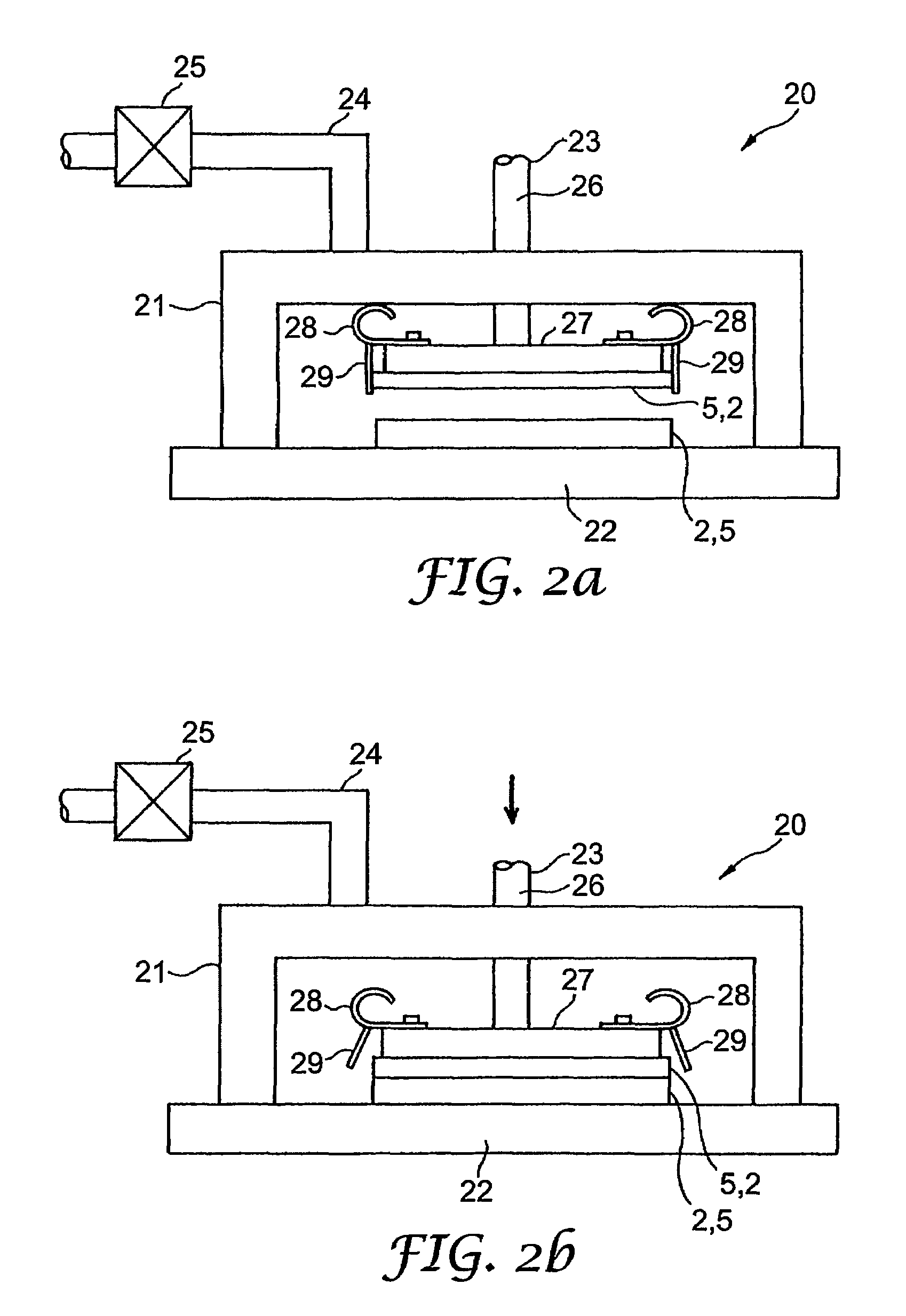Production method of semiconductor chip
a production method and technology of semiconductor chips, applied in the direction of semiconductor devices, basic electric elements, electrical appliances, etc., can solve the problems of low uniformity of thickness at grinding, low yield in dicing process, and greatly reduced productivity, so as to reduce the thickness of grinding and minimize or even effectively prevent the effect of dicing
- Summary
- Abstract
- Description
- Claims
- Application Information
AI Technical Summary
Benefits of technology
Problems solved by technology
Method used
Image
Examples
example 1
[0077]A glass substrate of 204 mm (diameter)×1.0 mm (thickness) was used as the light-transmitting support, and a silicon wafer of 200 mm (diameter)×750 μm (thickness) was used as the semiconductor wafer. A 10% solution (in propylene glycol methylether acetate solvent) of a photothermal conversion layer precursor having the composition shown in Table 1 below was coated on the glass substrate by spin coating. This was dried by heating and then cured by 1500 mJ / cm2 of ultraviolet (UV) irradiation to form a photothermal conversion layer on the support. On the other hand, an adhesive layer precursor having the composition shown in Table 2 below was coated on the wafer similarly by spin coating. The glass substrate and the wafer were laminated to each other in a vacuum adhesion apparatus shown in FIG. 2 and thereon, 1500 mJ / cm2 of UV was irradiated to cure the adhesive layer precursor, thereby obtaining a laminated body. This laminated body had a configuration of glass substrate / photothe...
example 2
[0085]A test was performed in the same manner as in Example 1 except that the composition of adhesive was changed as shown in Table 3 below and after curing the adhesive layer, the laminated body was placed in an oven at 120° C. for 3 minutes. The storage modulus at 25° C. of the adhesive layer after curing was 1.5×108 Pa. The chip could be obtained without causing any damage. The size of chipping (edge chipping) of the obtained chip was observed through an optical microscope. The results are shown in Table 5.
[0086]
TABLE 3Adhesive Layer 2Chemical NameTrade NameWeight PercentageUrethane acrylateUV7000B47.6%Dicyclopentanyl acrylateFA513A19.0%1,6-Hexanediol diacrylate1,6-HX-A28.6%Photoreaction initiatorIrgacure 369 4.8%Total100.0% UV-7000B (The Nippon Synthetic Chemical Industry Co., Ltd.)FA513A (Hitachi Chemical Co., Ltd.)1,6-HX-A (Kyoeisha Chemical Co., Ltd.)Irgacure 369 (Ciba Specialty Chemicals K.K.)
example 3
[0087]A test was performed in the same manner as in Example 1 except that the composition of adhesive was changed as shown in Table 4 below. The storage modulus at 25° C. of the adhesive layer after curing was 5.0×108 Pa. The chip could be obtained without causing any damage. The size of chipping (edge chipping) of the obtained chip was observed through an optical microscope. The results are shown in Table 5.
[0088]
TABLE 4Adhesive Layer 3Chemical NameTrade NameWeight PercentageUrethane acrylateUV6100B57.1%1,6-Hexanediol diacrylate1,6-HX-A38.1%Photoreaction initiatorIrgacure 369 4.8%Total100.0% UV-6100B (The Nippon Synthetic Chemical Industry Co., Ltd.)1,6-HX-A (Kyoeisha Chemical Co., Ltd.)Irgacure 369 (Ciba Specialty Chemicals K.K.)
PUM
 Login to View More
Login to View More Abstract
Description
Claims
Application Information
 Login to View More
Login to View More - R&D
- Intellectual Property
- Life Sciences
- Materials
- Tech Scout
- Unparalleled Data Quality
- Higher Quality Content
- 60% Fewer Hallucinations
Browse by: Latest US Patents, China's latest patents, Technical Efficacy Thesaurus, Application Domain, Technology Topic, Popular Technical Reports.
© 2025 PatSnap. All rights reserved.Legal|Privacy policy|Modern Slavery Act Transparency Statement|Sitemap|About US| Contact US: help@patsnap.com



